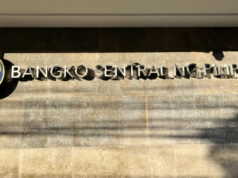Bad loans hit highest level in over seven years
THE NONPERFORMING LOAN (NPL) ratio of Philippine banks rose for the eighth straight month in September, surging to its highest level in over seven years amid the economic slowdown.
Data from the Bangko Sentral ng Pilipinas (BSP) showed the gross NPL ratio stood at 3.4% as of end-September, up from the 2.15% logged a year ago and the 2.84% seen as of end-August. This was the highest since the 3.42% NPL ratio recorded in May 2013.
Bad loans stood at P364.672 billion as of end-September, 60% higher than the P227.604 billion a year ago, and 20% up from P304.997 billion as of end-August.
Loans are considered nonperforming once they are unpaid for at least 30 days following the due date. These are deemed to be risky assets because borrowers are unlikely to settle these loans.
The industry’s NPL ratio is expected to rise to 4.6% by end-2020, based on BSP projections. It reached 17.6% in the aftermath of the Asian Financial Crisis in 2002.
“Near-record low interest rates have helped slow down any rise in NPL ratio, unlike in the Asian Financial Crisis and shortly thereafter when interest rates were relatively high,” Rizal Commercial Banking Corp. Chief Economist Michael L. Ricafort said in a text message.
The growth of bad loans outpaced the 1.5% year-on-year uptick in the industry’s loan portfolio to P10.73 trillion.
Meanwhile, past due loans stood at P511.39 billion, jumping by 66% from the P307.466 billion in September 2019. This caused the industry’s past due loan ratio to edge higher to 4.77% from 2.91% a year ago.
Restructured loans surged by 197% to P125.459 billion in September, bringing its ratio against the total to 1.17% from 0.4% a year ago.
Banks made up for the deteriorating loan quality by boosting their allowance for credit losses, which climbed 60% to P334.57 billion as of end-September from P209.069 billion a year ago.
Bad loan coverage ratio across the industry, which gauges the allowance for potential losses due to soured loans, stood at 91.75% as of end-September, higher than 91.86% a year ago but lower than the 107.35% logged in August.
The steady rise in bad loans is no surprise as many consumers and businesses struggle amid the economic slowdown, analysts said.
“Recent legislation for the loan grace period could slow this down modestly until it expires. We could see the (NPL) ratio to rise again after that although it will still be difficult to gauge as to when this will peak and this will depend largely on how quickly the economy can bounce back,” ING Bank N.V. Manila Senior Economist Nicholas Antonio T. Mapa said.
Republic Act No. 11494 or the Bayanihan to Recover as One Act (Bayanihan II) provided for a one-time 60-day loan moratorium following the initial debt relief provided Bayanihan I.
The passage of the Financial Institutions Strategic Transfer (FIST) Bill will also allow banks to free up their balance sheets by unloading some NPLs to asset management companies, Mr. Ricafort said. The bill has been passed in the Lower House and is still pending at the Senate. — Luz Wendy T. Noble



